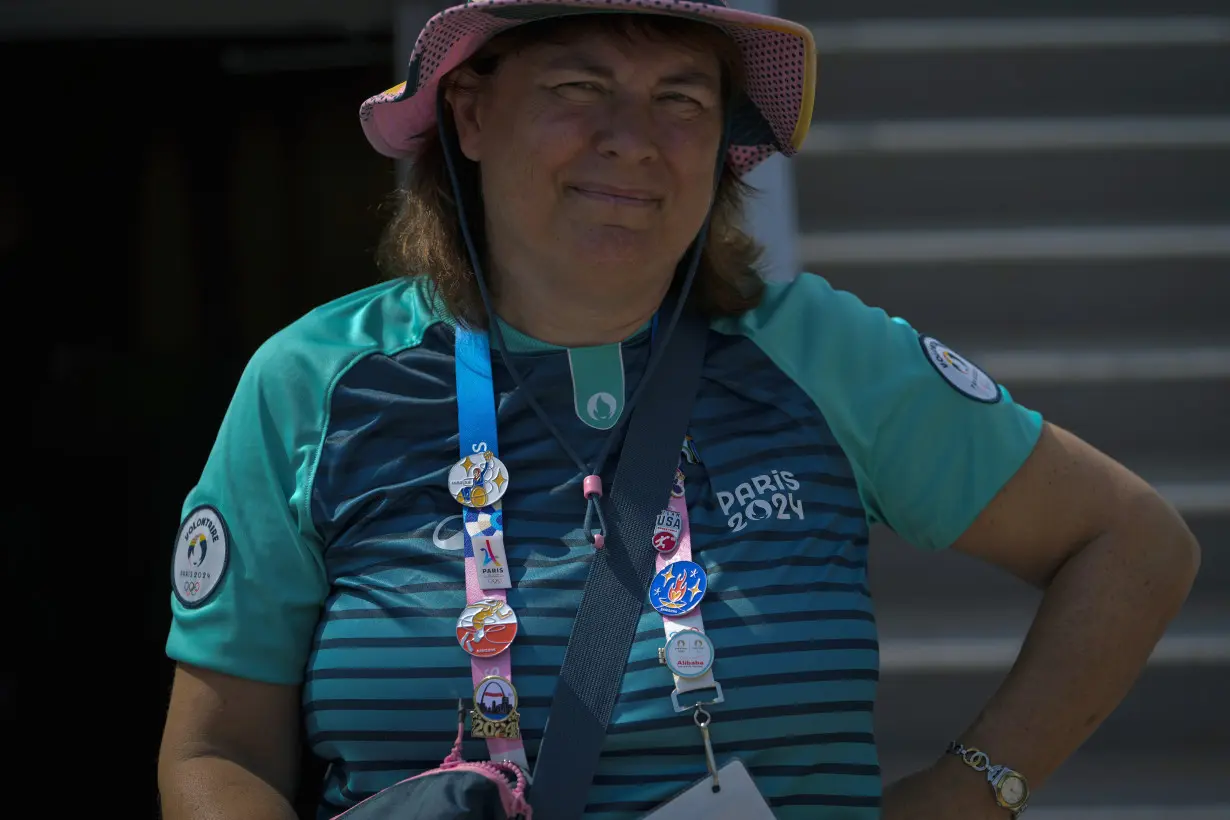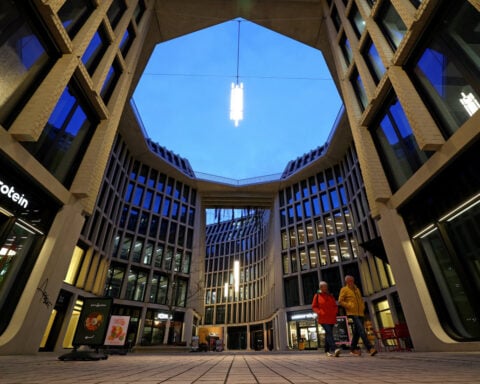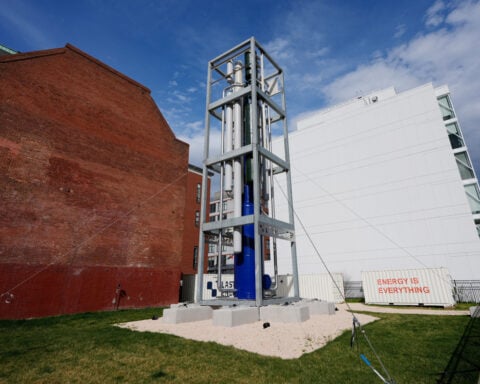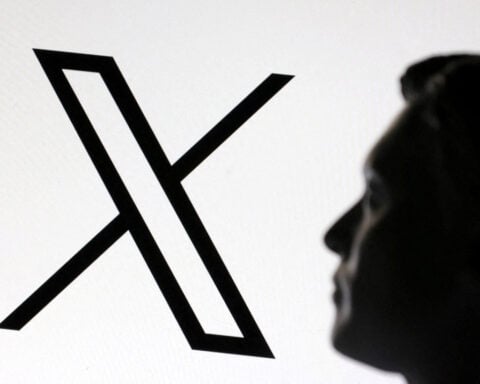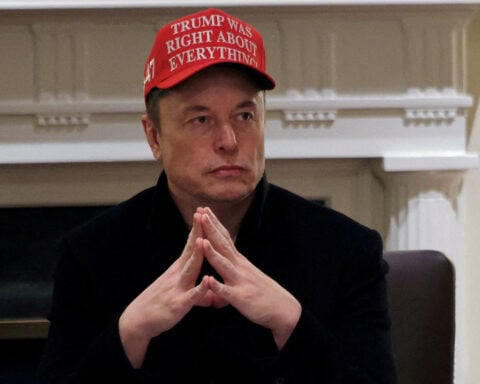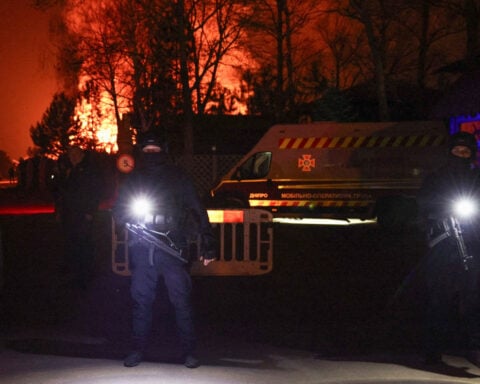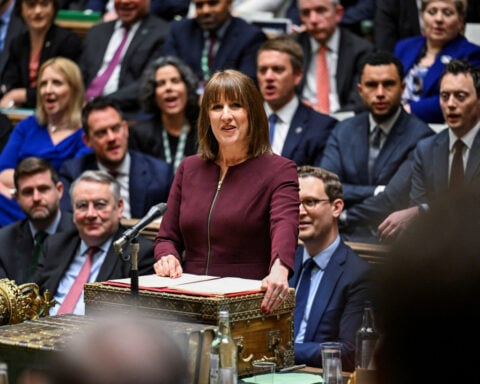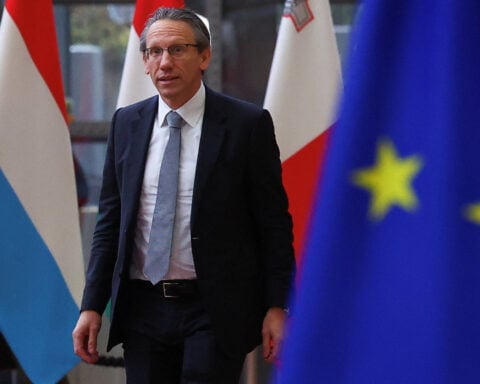PARIS (AP) — On the other side of the Atlantic from Wall Street, a market — more wholesome than cutthroat — has sprung up at the Paris Olympics. The commodity at the center of it all? Pins.
The city has seen an influx of collectors from all over the world, each eager to begin or expand their Olympic pin collection and share their stories.
“People are wired to trade. Human beings, we want to trade,” asserts Craig Robbins, a passionate pin collector from Los Angeles. “In life, if you cannot exchange, you die.”
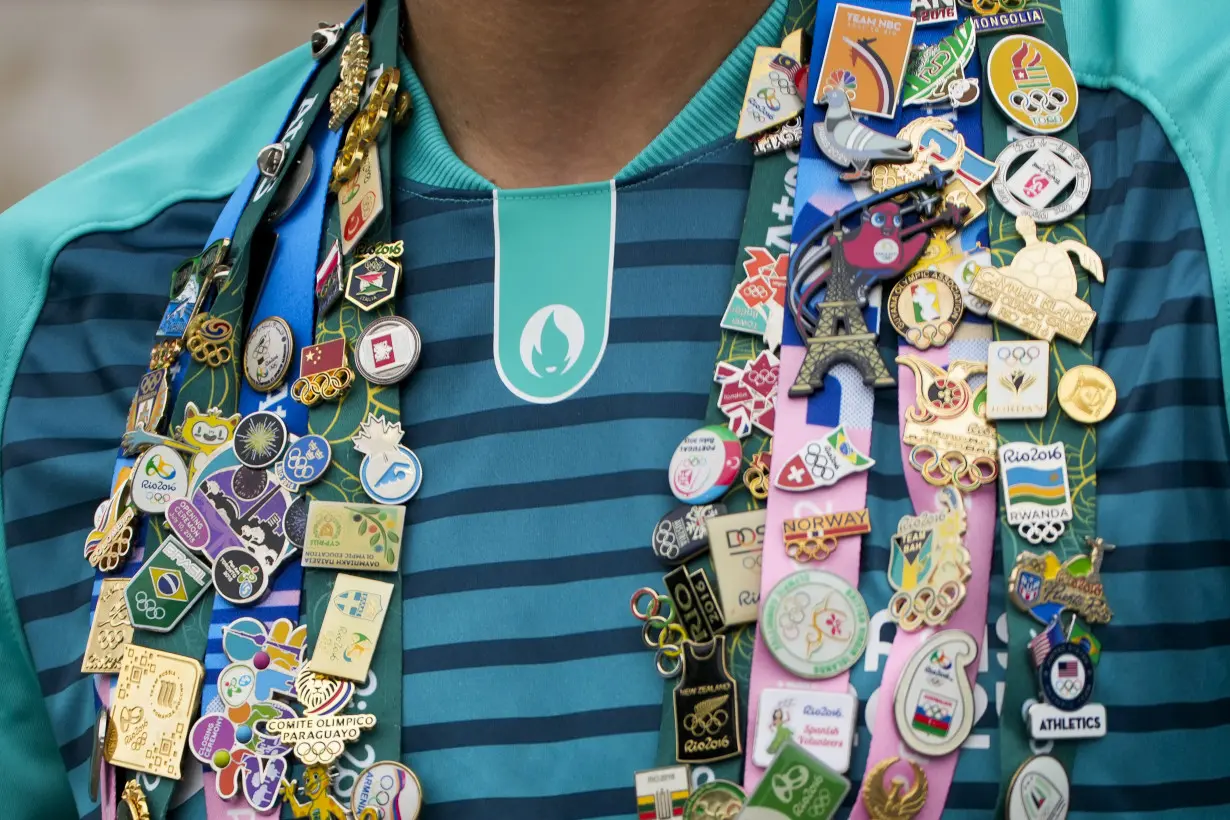
“Do you have any pins?” a Starbucks barista asks every journalist who comes in for coffee at the Palais des Congrès, the Olympics' main press center.
From bustling coffee shops to quiet streets, the same question has been echoing all over town, as Olympic volunteers, athletes, media workers, waiters, tourists and more all look for the same prized accessories.
“You can really feel the craze this year,” says French pin collector Laurent Facy.
The quest for pins has become an integral part of the Olympics, adding another layer of excitement to the Games. “It’s become a game; we trade a little bit like we used to at the playground,” he says.
Where did the pin craze start?
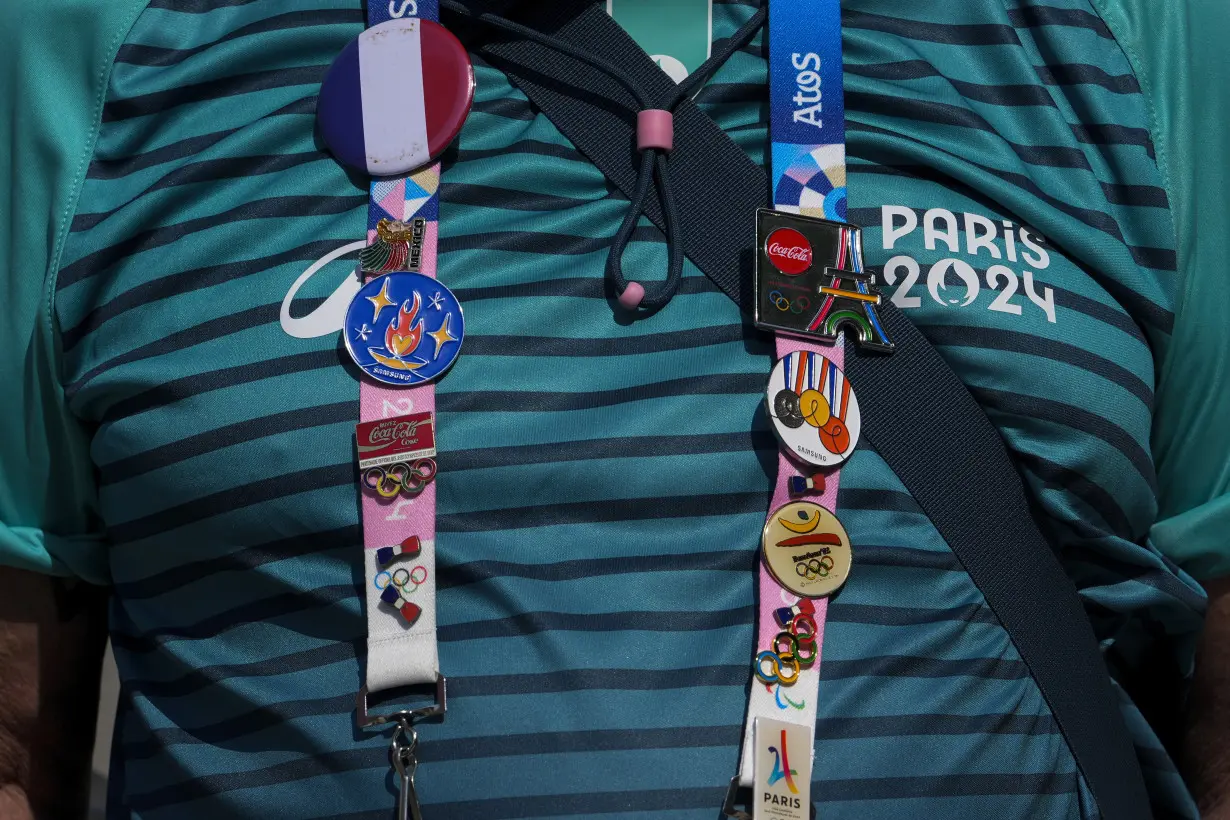
The tradition can be traced back to the first modern Olympic Games, revived by Pierre de Coubertin in 1896. In Athens, little cardboard badges were sported by athletes, coaches and reporters for identification.
More than a century on, the badges have stretched and evolved into extremely detailed, intricate and, at times, technological pins, customized to participating countries, news organizations, brands and even people.
“They’re like little pieces of art,” passionately declares Nicholas Wolaver, a dedicated American collector and trader.
Los Angeles 1984 was pivotal, according to the many pin traders on the streets — that’s where many of them started collecting.
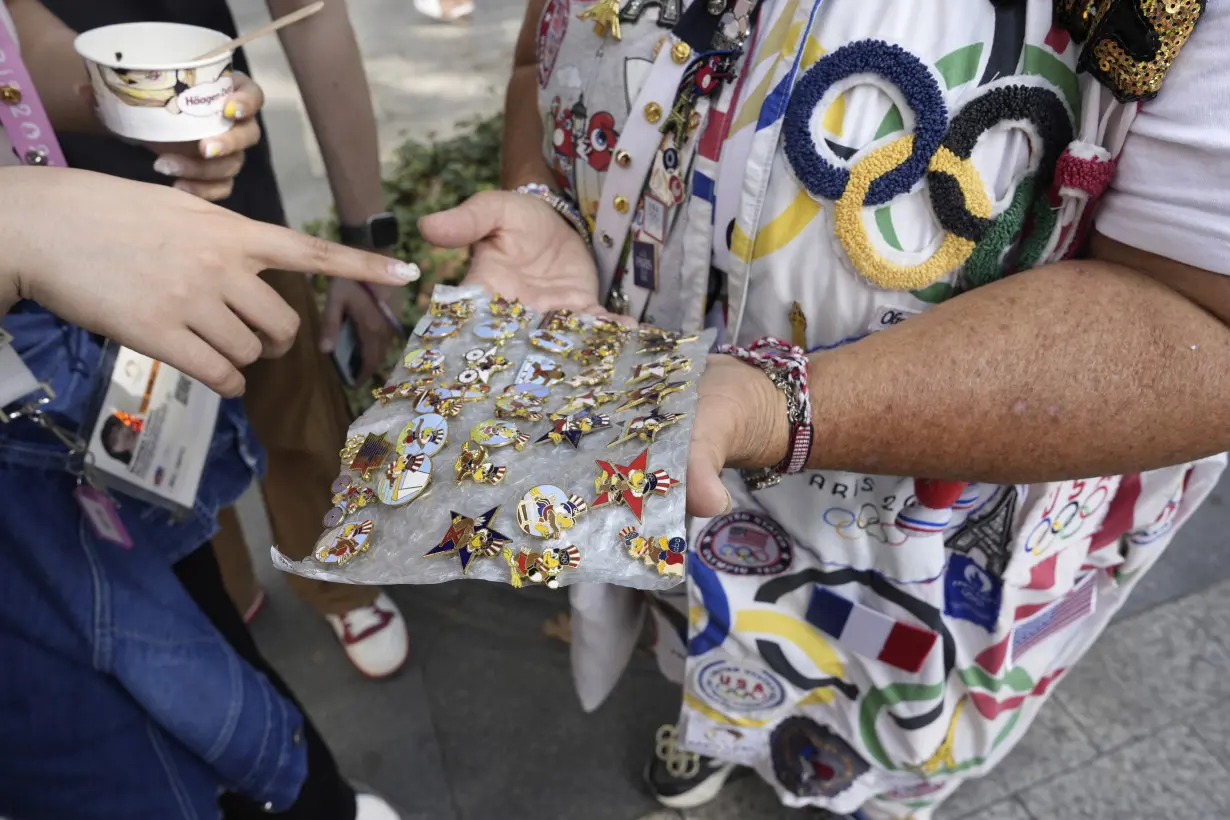
“You had media pins, sponsor pins, athlete pins, mascot pins. They found a way to really monetize pins for the public, and people were going crazy,” Wolaver says of those Games.
The Paris 2024 pins
After two Olympics held without spectators amid the coronavirus pandemic, the pin pandemonium has resurged.
“Paris has been very good for pin collecting because after the pandemic, where you could not trade pins so much in Tokyo and Beijing, people are very excited,” Wolaver explains.
The pins' popularity has been boosted by social media and the fact that Olympians themselves are getting in on the game. Serena Williams, a former Olympian, described herself as a “first-class pin collector” in a video on the Olympics’ official Instagram account. She even has her favorites: “There’s a few Thailand ones I’ll never trade. I finally was able to nab the North Korean pin.”
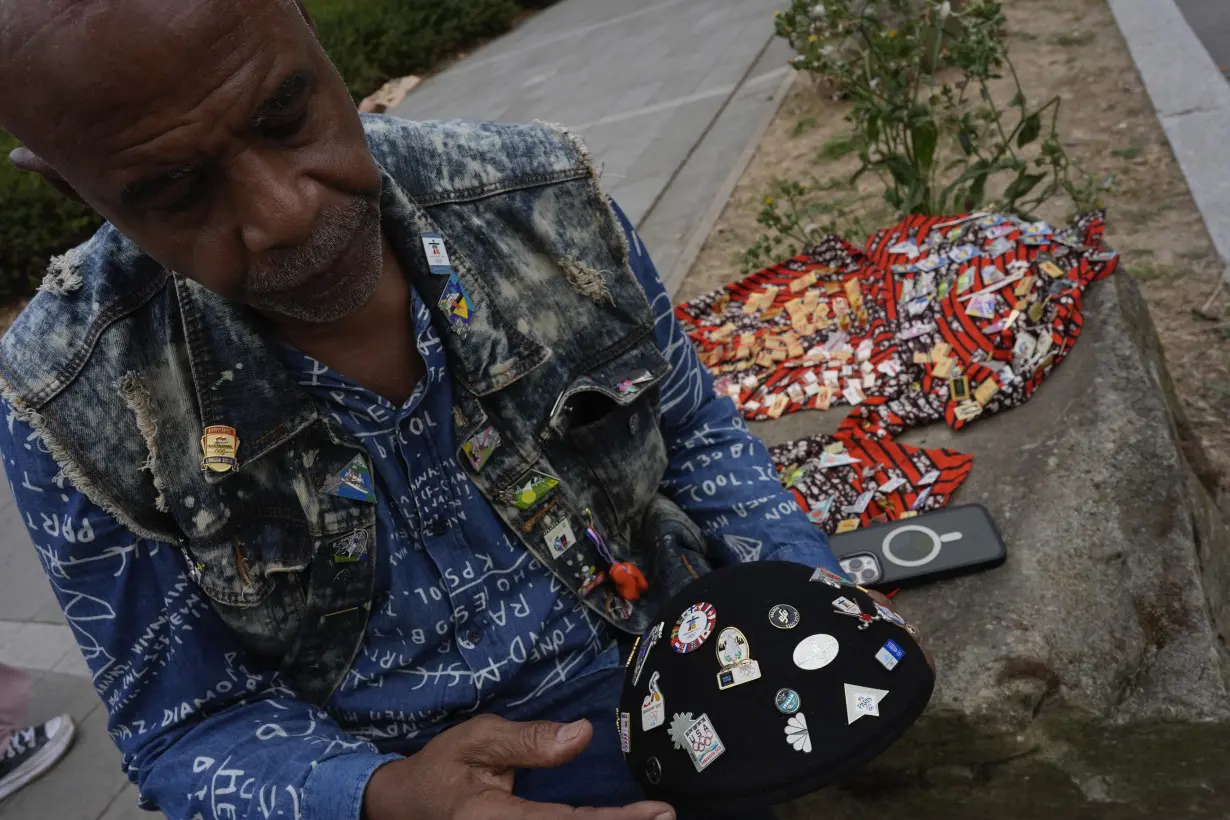
Britain's Andy Murray, the tennis player who just retired in Paris, is also all-in pin trading, according to former tennis player Laura Robson on Eurosport.
“There’s one athlete from Liechtenstein and (Andy) was searching the village high and low for him to try and find this poor man,” she said.
One of the buzziest pins at these Olympics is Snoop Dogg’s, which features the rapper-turned-NBC correspondent blowing smoke in the shape of the Olympic rings.
“What’s really cool is that Snoop Dogg made the youngests interested in pins too,” Robbins says.
How to qualify for Olympic pin trading
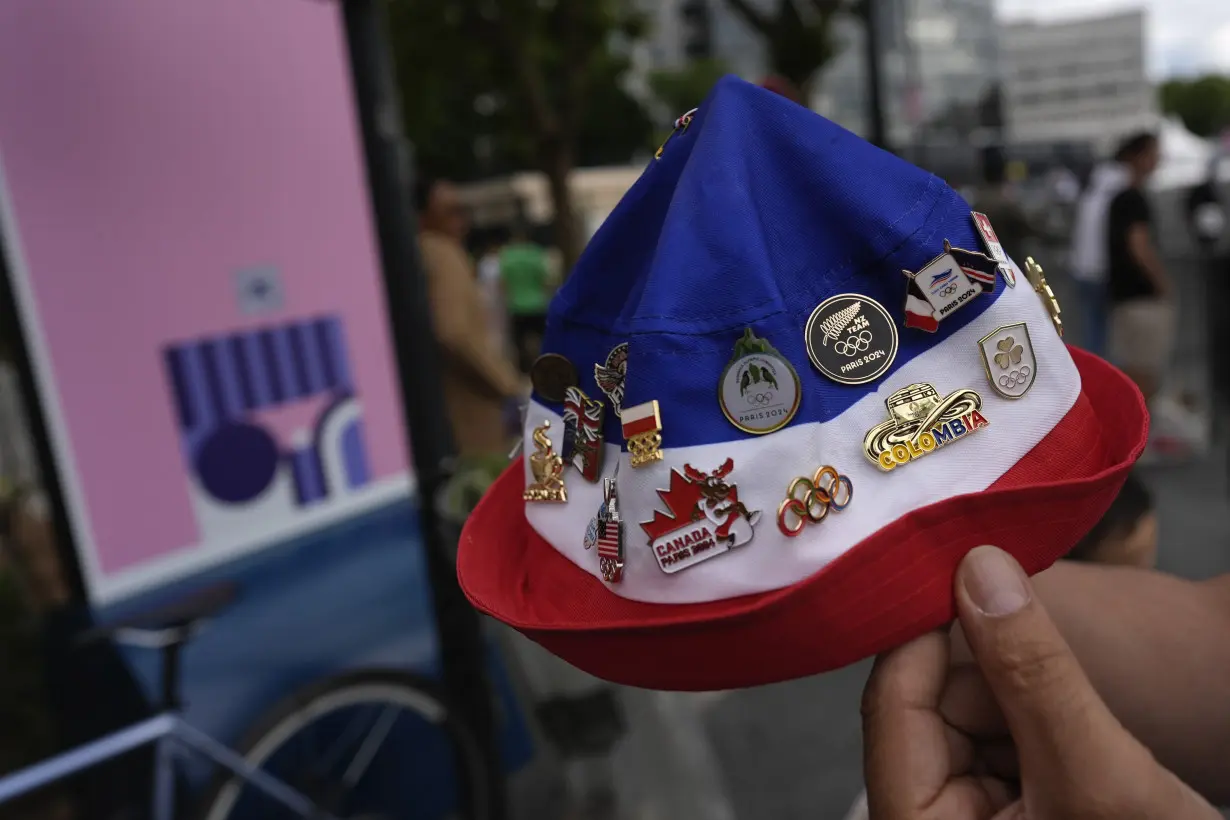
The appeal of pin trading lies in its accessibility and inclusiveness. While the official Olympic competition is confined to stadiums, pin trading takes place everywhere — even online. (The Associated Press' own pins are already going for between $30-50 on eBay.)
Wearing clothes seems to be the sole condition to participating. Traders and collectors adorn themselves — their badges, their shirts, their hats — with mosaics of multicolored pins, sparkling in the Paris summer light.
Traders can spot each other from a distance, admiring each other’s weighty collection. The sight of a fellow collector’s vibrant display is often more than enough to spark a conversation.
“Pins break down the walls where people can start talking to each other,” explains Robbins.
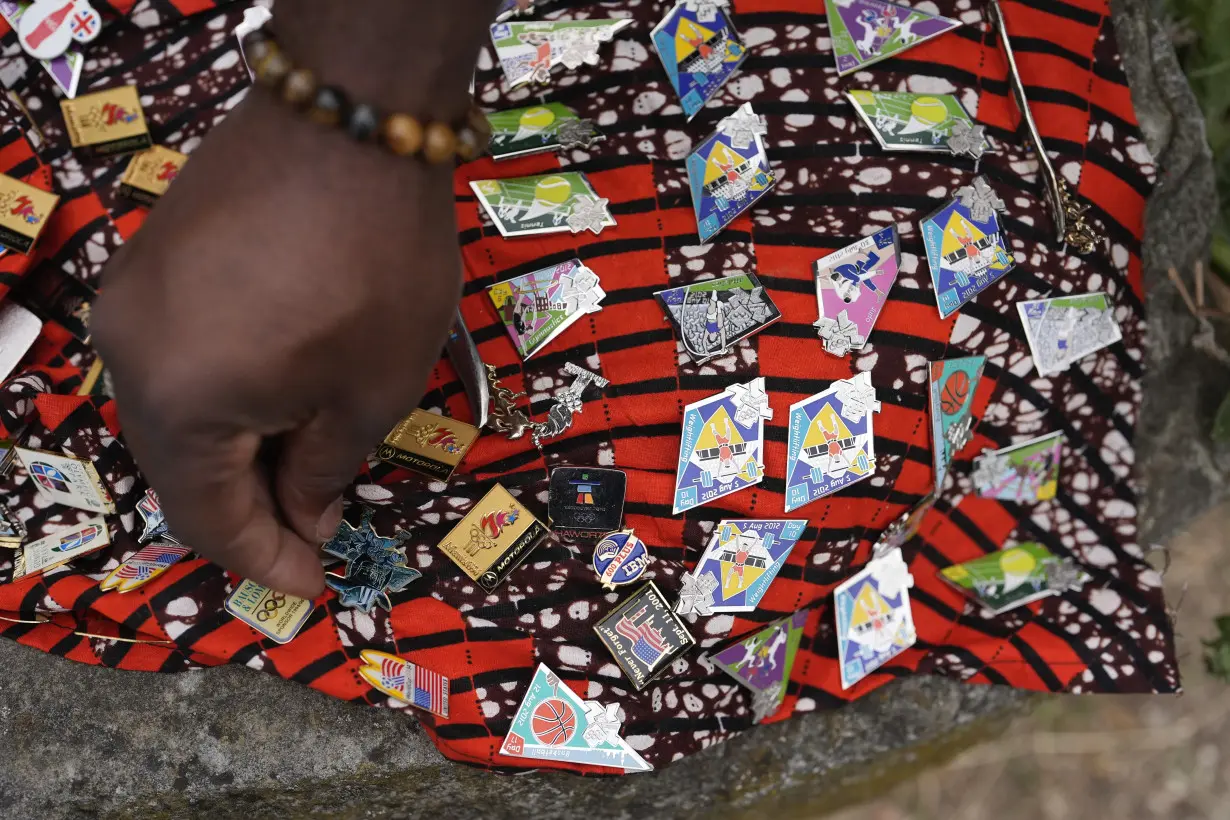
“It was just a nice way to meet people,” adds Arr Alansod, sitting next to him in the street.
And it doesn't just facilitate conversation with fellow enthusiasts. The pins serve as a draw for curious tourists and Olympics newcomers.
“You get to meet a lot of people,” says Paul Ians, another American visitor and collector. “It’s not so much the other pin traders, it’s the regular people who are coming to the Olympics.”
All seem to agree pins are a bridge between people, creating a platform for interesting encounters: “A lot of the time these strangers will tell you something you don’t know,” Ians says.
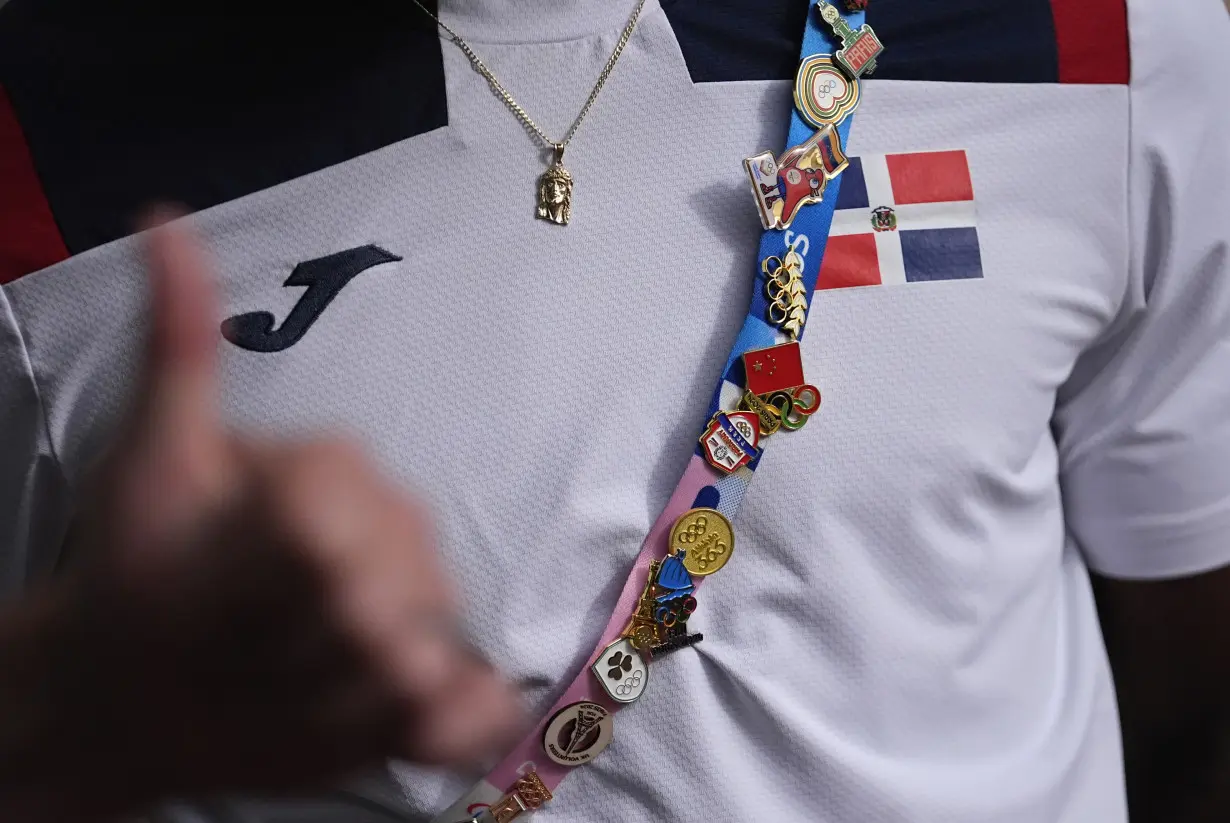
Sometimes those strangers are a little higher-profile: In his 40 years of trading, French President Emmanuel Macron and International Olympic Committee President Thomas Bach are some of Wolaver's proudest exchanges.
In essence, each pin holds a story, and through trading, people become storytellers, handing out pieces of their own personal, often Olympic tale.
___
For more coverage of the Paris Olympics, visit https://apnews.com/hub/2024-paris-olympic-games.

 Trump has begun another trade war. Here's a timeline of how we got here
Trump has begun another trade war. Here's a timeline of how we got here
 Canada's leader laments lost friendship with US in town that sheltered stranded Americans after 9/11
Canada's leader laments lost friendship with US in town that sheltered stranded Americans after 9/11
 Chinese EV giant BYD's fourth-quarter profit leaps 73%
Chinese EV giant BYD's fourth-quarter profit leaps 73%
 You're an American in another land? Prepare to talk about the why and how of Trump 2.0
You're an American in another land? Prepare to talk about the why and how of Trump 2.0
 Chalk talk: Star power, top teams and No. 5 seeds headline the women's March Madness Sweet 16
Chalk talk: Star power, top teams and No. 5 seeds headline the women's March Madness Sweet 16
 Purdue returns to Sweet 16 with 76-62 win over McNeese in March Madness
Purdue returns to Sweet 16 with 76-62 win over McNeese in March Madness
